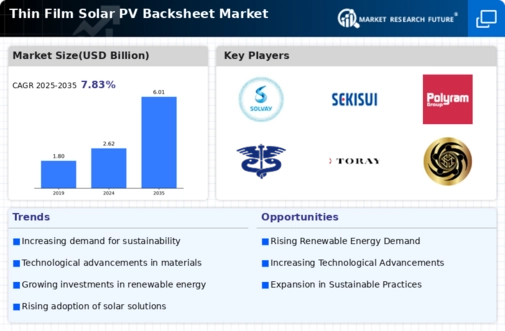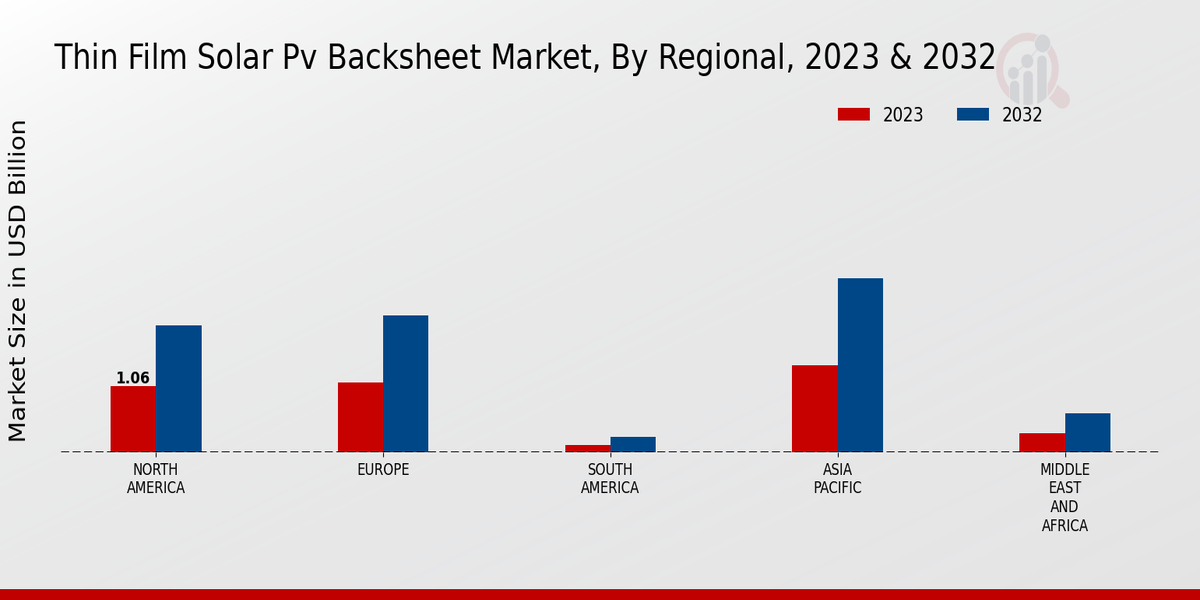Market Trends and Projections
Regulatory Support and Incentives
Regulatory frameworks and incentives provided by governments worldwide are instrumental in fostering the growth of the Global Thin Film Solar PV Backsheet Market Industry. Policies such as tax credits, feed-in tariffs, and renewable energy mandates encourage investments in solar technologies. For example, the United States has introduced various tax incentives for solar installations, which boosts the demand for thin film solar products. Such supportive measures are likely to enhance market dynamics, facilitating a favorable environment for the expansion of the thin film solar sector.
Growing Demand for Renewable Energy
The increasing global emphasis on renewable energy sources drives the Global Thin Film Solar PV Backsheet Market Industry. Governments worldwide are implementing policies and incentives to promote solar energy adoption, aiming to reduce carbon emissions and combat climate change. For instance, countries like Germany and China have set ambitious targets for solar energy capacity, which directly influences the demand for thin film solar PV backsheets. As a result, the market is projected to reach 2.62 USD Billion in 2024, reflecting a significant shift towards sustainable energy solutions.
Increasing Adoption in Emerging Markets
Emerging markets are witnessing a surge in the adoption of solar energy, significantly impacting the Global Thin Film Solar PV Backsheet Market Industry. Countries in Asia, Africa, and Latin America are increasingly investing in solar infrastructure to meet their energy needs sustainably. For instance, nations like India and Brazil are implementing large-scale solar projects, which creates a substantial demand for thin film solar technologies. This trend is expected to contribute to the market's growth, as these regions capitalize on the benefits of renewable energy sources.
Cost Competitiveness of Thin Film Technology
The cost-effectiveness of thin film solar technology plays a crucial role in shaping the Global Thin Film Solar PV Backsheet Market Industry. As manufacturing processes become more efficient, the overall cost of thin film solar panels decreases, making them more accessible to a broader range of consumers. This trend is particularly evident in regions where traditional solar technologies may be prohibitively expensive. The anticipated compound annual growth rate (CAGR) of 7.83% from 2025 to 2035 indicates a strong market potential driven by the affordability of thin film solutions.
Technological Advancements in Solar Technology
Technological innovations in solar panel efficiency and manufacturing processes are pivotal for the Global Thin Film Solar PV Backsheet Market Industry. Advances such as improved materials and production techniques enhance the performance and longevity of solar panels, thereby increasing their attractiveness to consumers and businesses alike. For example, the development of lightweight and flexible backsheets has expanded the application of thin film solar technology in various sectors, including automotive and building-integrated photovoltaics. This trend suggests a robust growth trajectory, with the market expected to expand to 6.01 USD Billion by 2035.




















